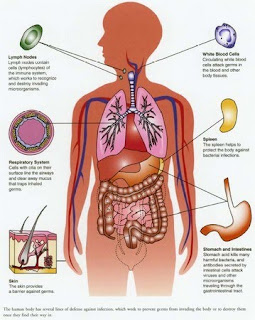
The first principle is to always remember that your teacher is not a god. For example, Tracy is my yoga teacher, not my yoga goddess; her teacher was Kraftsow, and his teacher was Desikachar, and his teacher was Krishnamacharya, but none of these people is a god (although some will tell you differently).
You do your teacher a great disservice if you try to turn him or her into a god, and insult God in the process.
Now, a teacher has been sent (and not just to me alone) to help me find The Way, and what I'm finding is that my mind runs in a similar direction as his did. Not in the same channel, since he was of another time and another place, but in a direction harmonious with that of the teacher.

For instance, many of Jung's Red Book illustrations are enclosed in borders whose pictorial motifs either symbolically re-iterate the content of the image or graphically amplify the picture's theme. I was using that same technique years before I ever saw the Red Book or any of Jung's pictures, as I did with this tarot image which is, incidentally, a portrait of Dr. Jung as "Time" or "The Old Man," tarot trump IX, which in modern decks is usually called "The Hermit."
Of finding the way Jung says: "I give you news of the way of
this man, but not of your own way. My path is not your path, therefore
I cannot teach you. The way is within us...
"I will be no savior, no master teacher, no lawgiver unto you. You are no longer little children...May each one seek out his own way..."
I don't find it strange at all that even before I read these passages, I had decided that the Red Book was going to be more of a how-to manual than a revelation of The Way It Is. I find a lot of Jung's cosmological vision and imagery inscrutable and have no wish to try to climb into his mind. However, I think I could learn a lot of valuable pointers by closely studying the techniques he used to plumb the depths.
Plus, I have a natural aversion to gurus and holy books. I dread the kinds of situations we all face from time to time, when we get cornered by a couple Mormon missionaries (they always work in tag-team duos) in their little Hitler suits and buzz haircuts, trying to convince us that Joe Smith and his golden plates were the real deal. Or some overexcited fool with a copy of "Dianetics" and a bunch of Scientology tapes whose momentary mission is to convince me (why me?) that the alcoholic-psychotic-sex addicted L. Ron Hubbard was sent from the throne of God. Or some idiot clutching that towering mountain of made-up shit, The Urantia Book. God save us from those who make stuff up, slap it between two book covers, and then go out and use it to gain power over the weak and ignorant, and take their money.
Now, here's an important difference between me and Dr. Jung I've noticed: he had visions -- portents and illuminations that originated in his mind. I have dreams, but no visions. What I have instead are occurrences of real, tangible things crossing my path that take on a tremendous symbolic significance, and become encoded as talismans of what I'm experiencing at any given time in my life.
For example, this morning I went out at about two a.m. because I was unable to sleep. I drove to a 7-11 store to get a cup of coffee and a pack of cigarettes, and encountered a number of bizarre and in some cases frightening people. As I headed home along a nearly deserted 105th street I saw what I thought was a cat crossing the road up ahead.
"Better be careful crossing this busy street this time of night, kitty," I said out loud. But then as I got closer to this animal I saw it wasn't a cat at all, but an enormous rat, the largest I've ever seen.
"Welcome to the trailhead of The Way," says the rat to me over his shoulder as I went by. I guess nobody ever promised it wouldn't be scary.
UPDATE: I've made a second re-identification of that "cat" I saw this morning, and decided that the animal who crossed my path must have been an opossum. There has never been a rat that big. It was dark and I was driving a moving vehicle, and saw an animal which had what looked like a naked tail and a long, pointed snout. Opossums and raccoons are fairly common around here, even in the city.
--30--









































